click on images to enlarge
SILVER FIGURAL TOOTHPICK HOLDERS
OF 19TH CENTURY
Anthropologists believe that early men picked their teeth with sticks
cut to a sharp point.
Evidence of Stone Age toothpicks is indirect but compelling and the
demonstration is on fossil teeth. Analysis of their marks has led to the
consensus that they were made by heavy toothpick use by our early
ancestors.
The grooves were especially common in the teeth of Neanderthals who
lived in Europe and Asia, about 100,000 years ago. Similar markings have
been found in the fossilized teeth of both American Indians and
Australian Aborigines.
At this age people did not know how to repair teeth and only good care
was the method to maintain their teeth, so they tried clean their teeth
instinctively and a branch of wood was the beginning of toothpick.
Toothpicks were introduced into Japan about 528 along with Buddhism via
China and Korea. In India twigs from Neem tree were used but as they did
not grow in China use was made of the willow tree, a spicebush, a cedar,
a peach tree, or a bamboo.
The clean custom of the toothpick migrated from the usual life of
Buddhist monks very shortly to the nobles. Soon officers of the Court
and Shinto priests began to imitate their clean custom.
Romans and Greeks were also avid oral hygiene enthusiasts.
The early Romans had their own dental-care preferences. Pliny the
Younger of Rome (61-113 A.D.) proclaimed that using a vulture quill as a
toothpick would cause halitosis, but using a porcupine quill was
acceptable because it 'made the teeth firm'.
In fifteenth-century Europe, picking the teeth was widely accepted until
philosophers began to issue conduct warnings. Rhodes said: 'Pick not thy
teeth with thy knyfe, but take a stick, or some clean thyng, then doe
you not offend'.
Personal silver, gold or ivory toothpiks were widely used in the Middle
Age and often were included in traveling sets together with knife and
spoon.
At the beginning of 19th century, with the introduction of disposable
wooden toothpicks, the use of figural holders suitable to display the
toothpicks on the table, spread in Continental Europe.
Usually these holders had a pierced base or a small container where
sunburst toothpicks ornamentations were inserted.
 An excellent illustration of 'sunburst ornamentation' is displayed
in this image of an Italian toothpick holder representing Napoleon
standing in front of two cannons with toothpicks inserted into the
cannon balls.
An excellent illustration of 'sunburst ornamentation' is displayed
in this image of an Italian toothpick holder representing Napoleon
standing in front of two cannons with toothpicks inserted into the
cannon balls.
(Venice, before 1810, silversmith Bartolomeo Valazza)
|
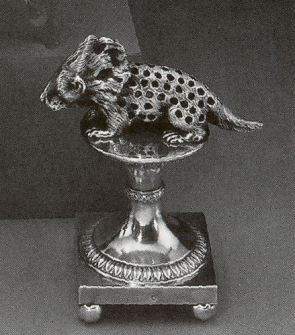  Textured skin of hog and porcupine were particularly suitable for
toothpick inserting. The rooting hog with curly ears on the left is
Portuguese and the porcupine on a pedestal with four ball feet is
French. The toothpick holders below are Italian, made in Venice by
silversmith Luigi Merlo (on ther left) and Giovanni Fantini (on the
right).
Textured skin of hog and porcupine were particularly suitable for
toothpick inserting. The rooting hog with curly ears on the left is
Portuguese and the porcupine on a pedestal with four ball feet is
French. The toothpick holders below are Italian, made in Venice by
silversmith Luigi Merlo (on ther left) and Giovanni Fantini (on the
right). |
Other animals were used for figural toothpick holders
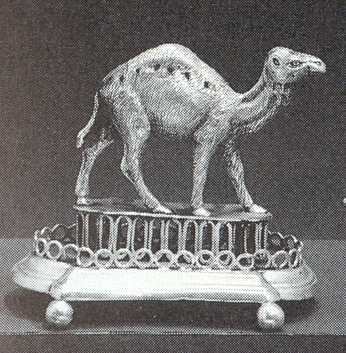 |
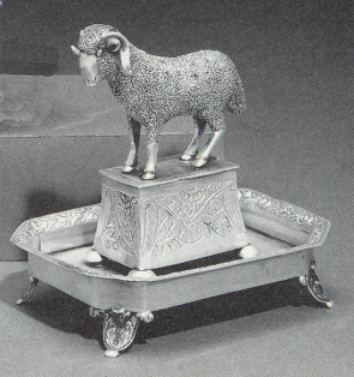 |
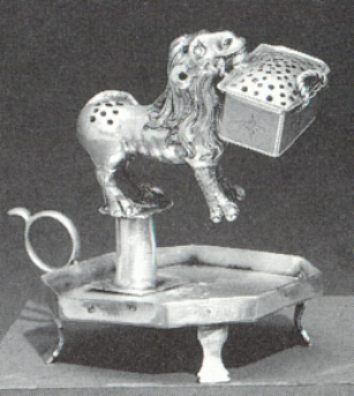 |
|
camel
|
curly-coated ram
|
lion holding a rectangular basket in its
mouth |
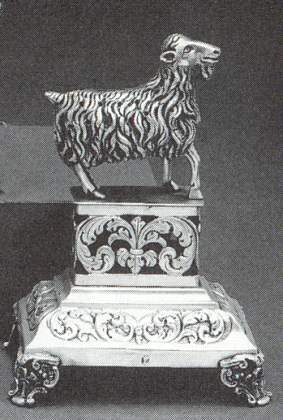 |
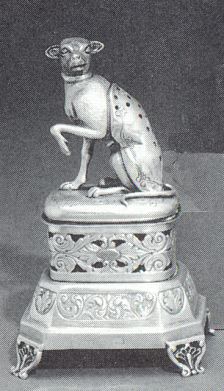 |
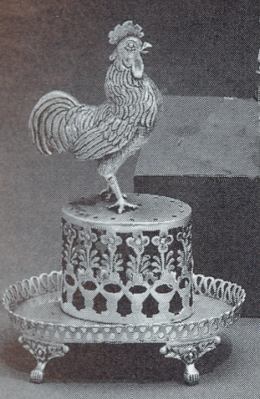 |
| shaggy-haired goat |
>whippet |
crowing rooster |
birds on a bath held by a kneeling cupid or drinking from a fountain
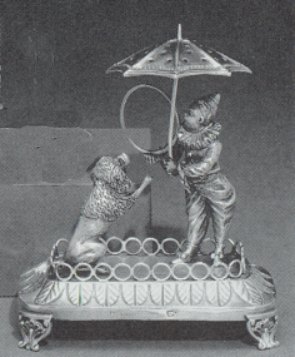 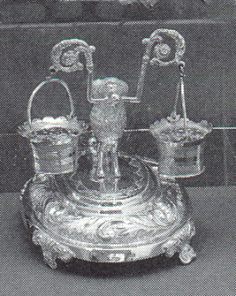
poodle about to jump through a ring held by a clown
or
holding two baskets in his mouth
|
or mythologic animals as wyvern and mermaid holding an anchor and buoy
Toothpick holders representing the
mythological Deity of the Sea Neptune/Poseidon (3)

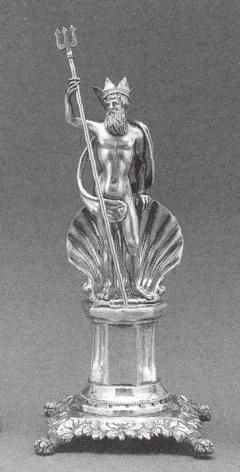 
 and
his wife, the Nereid Amphitrite, Goddess of the Sea, standing on
pedestals and backed by shells and
his wife, the Nereid Amphitrite, Goddess of the Sea, standing on
pedestals and backed by shells |
a set of 'putto' toothpick holders:
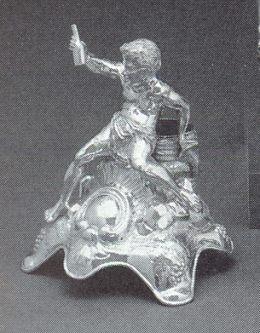 |
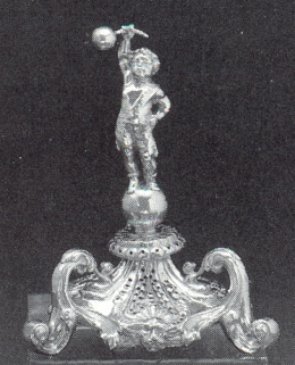 |
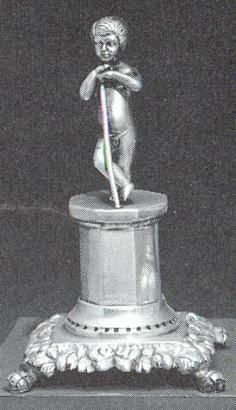 |
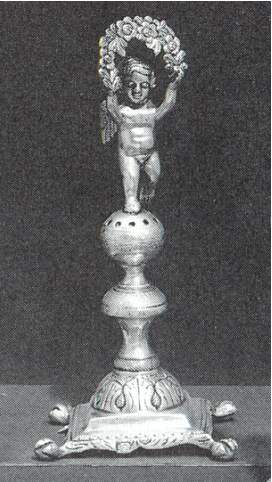 |
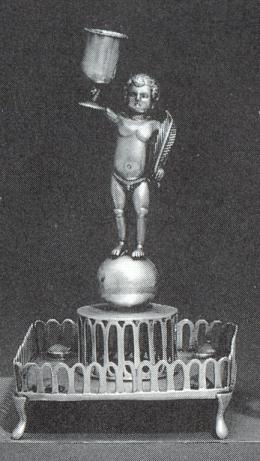 |
bacchus
on a barrel |
holding
a flower |
leaning on
a stick |
holding a garland |
holding a cup and frond |
a set of 'female figure' toothpick holders:
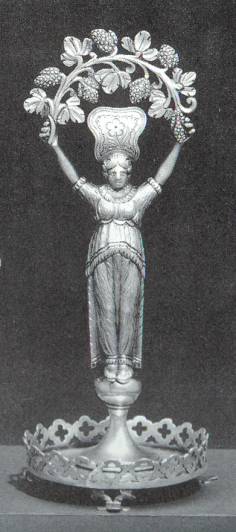 |
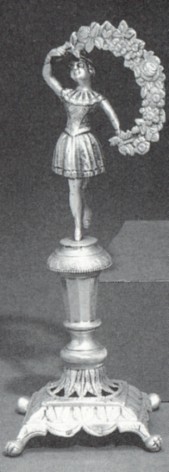 |
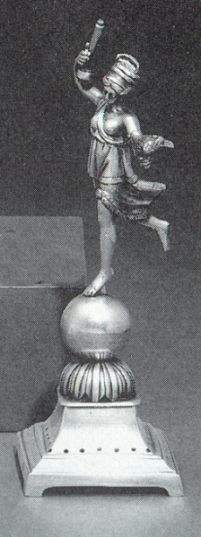 |
bacchanal
figure holding
a garland |
dancing girl
holding
a garland |
running girl
holding
a bird |
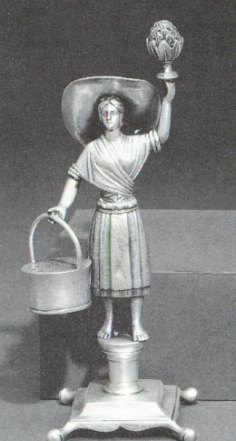 |
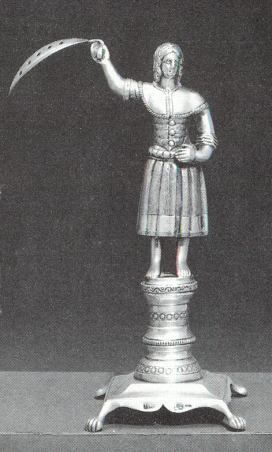 |
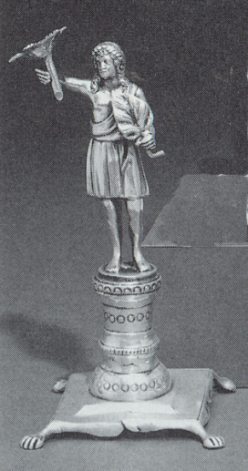 |
girl holding a bud and
a basket |
girl waving a frond |
girl with a flower and a leaf |
a set of 'male figure' toothpick holders:
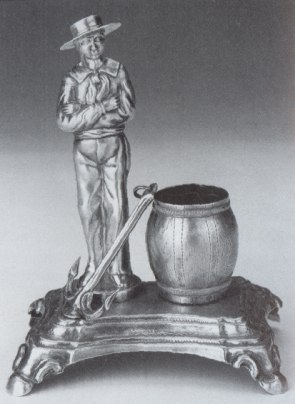 |
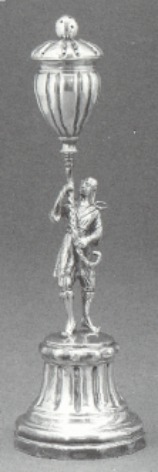 |
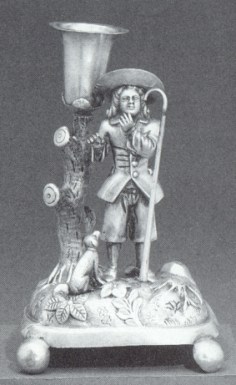 |
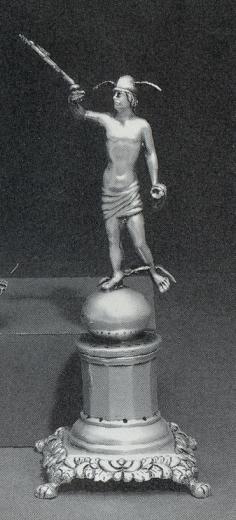 |
| sailor standing near a barrel and anchor |
chinamen holding
a bud-form vase |
shepherd with
his dog |
Mercury holding
a caduceus |
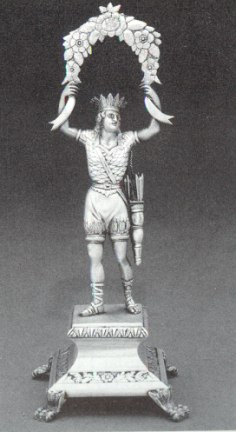 |
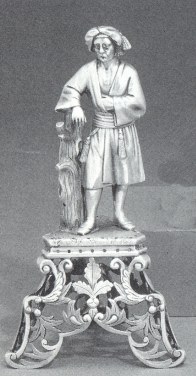 |
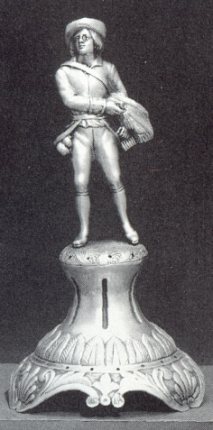 |
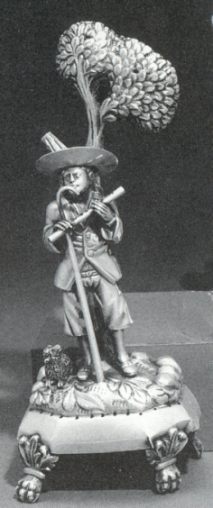 |
| Indian holding a garland |
bard leaning against a tree-stump |
youth with cape |
shepherd holding a flute |
a set of 'others' figural toothpick holders:
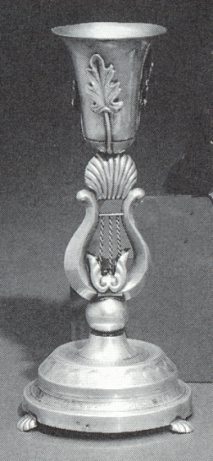 |
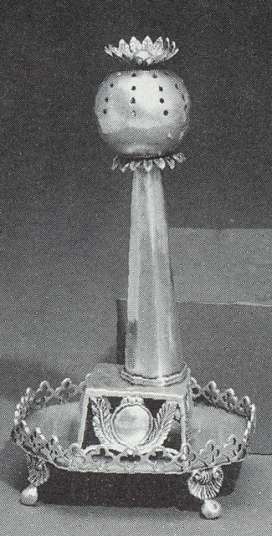 |
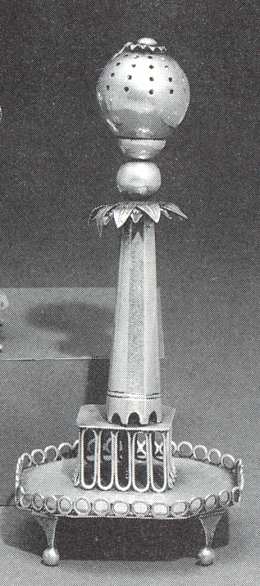 |
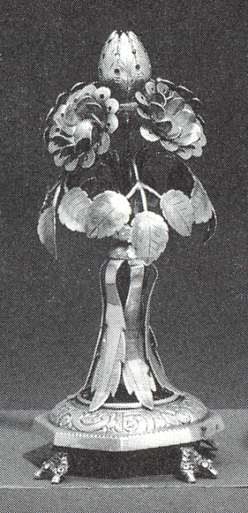 |
| lyre supporting a cup |
obelisk-form topped by pomegranate |
obelisk-form topped by pomegranate |
flower spray on octagonal base |
All the toothpick holders in this selection belongs to 19th
century 'Continental silver' production. They were made in Portugal
(most), Italy (Venice and Turin), France, Spain and Austria
|
